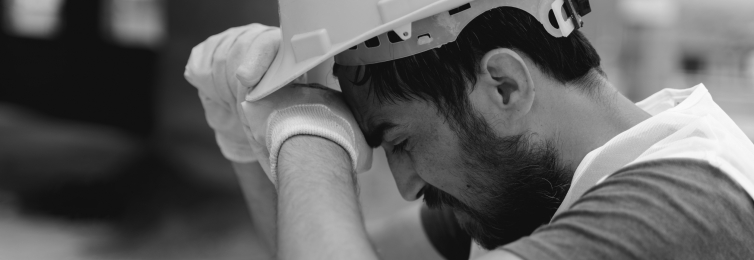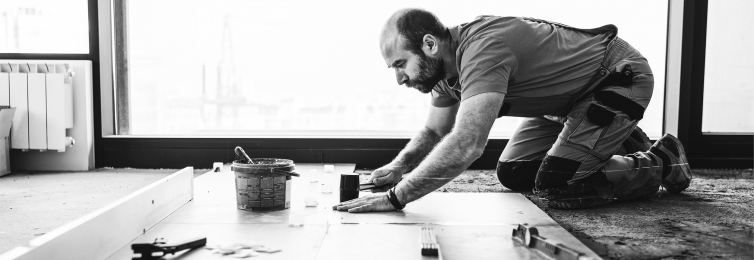Picture your crew ready for the work day with safety glasses, harnesses, and hard hats. And your job-site? Guardrails cover openings, and WallWalkers eliminate the need for makeshift scaffolding. When it comes to safety gear, you have it all.
Yet, there’s one glaring hazard that could take down anyone on your crew. The sun. Are you and your team prepared to spot the signs of heat stress?
Warning Signs
Be on the lookout for two different sets of symptoms. A worker experiencing heat stress may either have heat exhaustion or the more serious condition, heatstroke.
Symptoms of heat exhaustion:
- Thirst
- Nausea
- Clammy skin
- Darkening of or decrease in urine
- Headaches, dizziness
- Irritability, confusion
Left untreated, this condition could quickly progress to heatstroke. When the body loses its ability to regulate its temperature, heatstroke can be fatal.
Symptoms of heatstroke:
- Hot, sweat-free skin
- Muscle cramping
- Bewilderment or irrationality
- Loss of consciousness or seizures
Take these tips to the job-site to protect your team.
1. Personal Protective Equipment (PPE)
While the ever-important PPE eliminates many hazards, it can also simultaneously accelerate the onset of heat stress symptoms.
Harnesses, respirators, and hard hats restrict heat from escaping, making it more difficult for your body to regulate its temperature. Think of the coveralls that plumbers, HVAC contractors, and termite inspectors wear while working in the crawlspace.
Borrow a job-site secret, and place a small, cool, wet cloth on your head before securing your hard hat for a few more moments of relief from the heat.
2. Medications
Certain medications may also lower your tolerance for heat or ability to produce sweat and cool off. Common examples include some antidepressants, antihistamines, blood pressure, and thyroid medicines.
Ensure your crew talks with their doctors or pharmacists and understand the risks associated with any new prescriptions or medications.
3. Fluids
In high temperatures, water is your best friend. Drink at least one cup every 15 minutes, and take periodic breaks in cooler temperatures. Steer clear of caffeine and heavy meals, too. However, if a worker is experiencing nausea, don’t overcompensate. Water may induce vomiting and cause more rapid fluid loss.
Remember, OSHA requires contractors to have a water cooler on-site. You can get cited for not providing one drinking cup per worker.
4. Supervision
Avoiding the dangers of heat exhaustion and heatstroke begins with the owners and supervisors who set the safety tone on the job-site. Employees may be afraid to speak up, fearing embarrassment in front of their coworkers or loss of their job.
Monitor your team closely for any out-of-the-ordinary behavior. Tell them to let you know if they’re experiencing any symptoms of heat stress as well.
5. Work Hours
Consider your work hours alongside the hottest hours of the day. Follow suit with some contractors, and start by 6 a.m. in order to head home to the air conditioner in the early afternoon.
As the heat and humidity rise, refresh your team on the warning signs of heat stress.
Content reviewed 6-2021.




 Find an
Find an